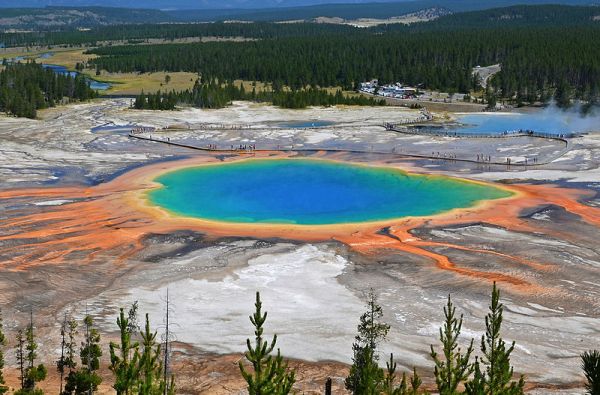The
Grand Prismatic Spring at Yellowstone National Park is so colorful that
it’s hard to believe there aren't dyes or Photoshop involved. But the
formation is totally natural. The hot spring is one of many geysers and
hot springs that vent the earth’s heat to the surface at Yellowstone.
This one is full of water, and also full of different kinds of bacteria
that give it those rainbow colors.
Water at the
center of the spring, which bubbles up 121 feet from underground
chambers, can reach temperatures around 189 degrees Fahrenheit, which
makes it too hot to sustain most life (some life does manage to exist,
but its limited to organisms that feed off of inorganic chemicals like
hyrdogen gas). Because there's very little living in the center of the
pool, the water looks extremely clear, and has a beautiful, deep-blue
color (thanks to the scattering of blue wavelengths—the same reason
oceans and lakes appear blue to the naked eye). But as the water spreads
out and cools, it creates concentric circles of varying
temperatures—like a stacking matryoshka doll, if each doll signified a
different temperature. And these distinct temperature rings are key,
because each ring creates a very different environment inhabited by
different types of bacteria. And it's the different types of bacteria
that give the spring its prismatic colors.
Smithsonian introduces us to the various types of bacteria that live in the different temperature zones, and tells us how each produces its distinctive color.


No comments:
Post a Comment